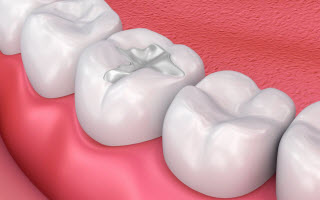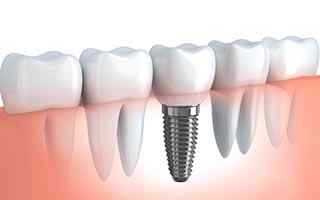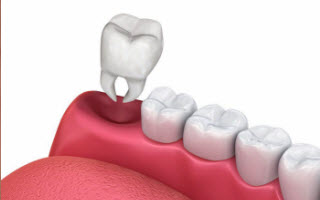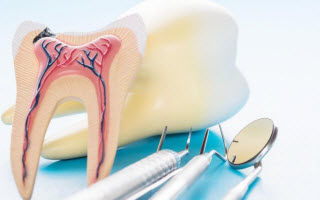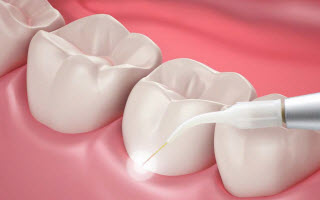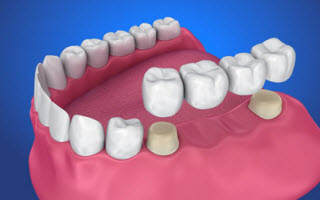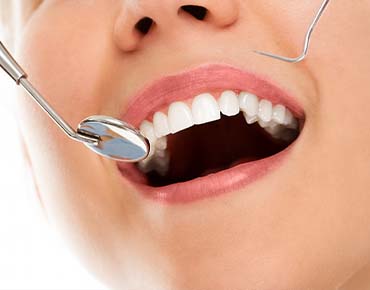Dental Fillings in Santa Monica
Dr. Ali Mogharei, a skilled cosmetic dentist, offers precise and customized Dental Fillings in Santa Monica, Culver City, Venice, and Brentwood. His expertise in Dental Fillings restores teeth to their natural shape, relieves discomfort, and promotes a healthy, confident smile with long-lasting Dental Fillings.
Frequently Asked Questions Dental Fillings
Dental fillings are the procedures to repair decay in teeth or minor fractures. Thus, a dental filling is part of restorative dental treatment. You may need a dental filling operation if you have the following conditions:
- Uneven teeth surface so as to improve the biting and chewing function.
- Tooth decay that makes you suffer sensitivity upon taking hot or cold drinks.
- The loss of enamel covering leading to the exposure of the inner part of your tooth.
- The wearing down of teeth over time resulting in dental structure deformities or cracks.
- A continuous feeling that there are gaps between teeth.

Why Dental Fillings are Necessary
When you eat food and fail to brush your teeth well, tiny food particles and plaque that remain within the teeth for long periods may form into sticky substances. Over time, improper brushing of any sweet and sticky food remains will lead to the accumulation of bacteria and cause the release of acid and toxins. Eventually, the toxins and acid start to dissolve or erode the enamel, which is the hardcover protecting your teeth.
After the formation of bacterial in teeth, the enamel usually begins to discolor gradually. Discolored teeth typically look light brown, light yellow, dark yellow, dark brown-grey, or jet black. When not treated early enough, the portion of the tooth that bacteria eats into definite chips away. The chipped off part is what the dentist calls a cavity.
When your tooth gets damaged because of bacterial infections, a dental surgeon will fill up the cavity to re-establish the normal teeth functions. People who experience piercing tooth pain when eating or drinking should consult a dentist for an assessment of the status of the teeth.
Why do Teeth Crack? The Facts About Dental Fillings
A too may crack for a number of reasons, for instance, chewing hard and solid items. The solid objects include nuts, candy, pencil butts, or hard ice cubes. The regular clenching of your tooth can cause cracks too. Also, a sudden, hard blow on the jaw in an automobile crash, physical assault, or during slip and fall accidents are the other reasons why cracks may form. You also cannot rule out the sudden exposure to extremely high temperatures and a quick return to cold atmospheres as the cause of cracks in teeth.
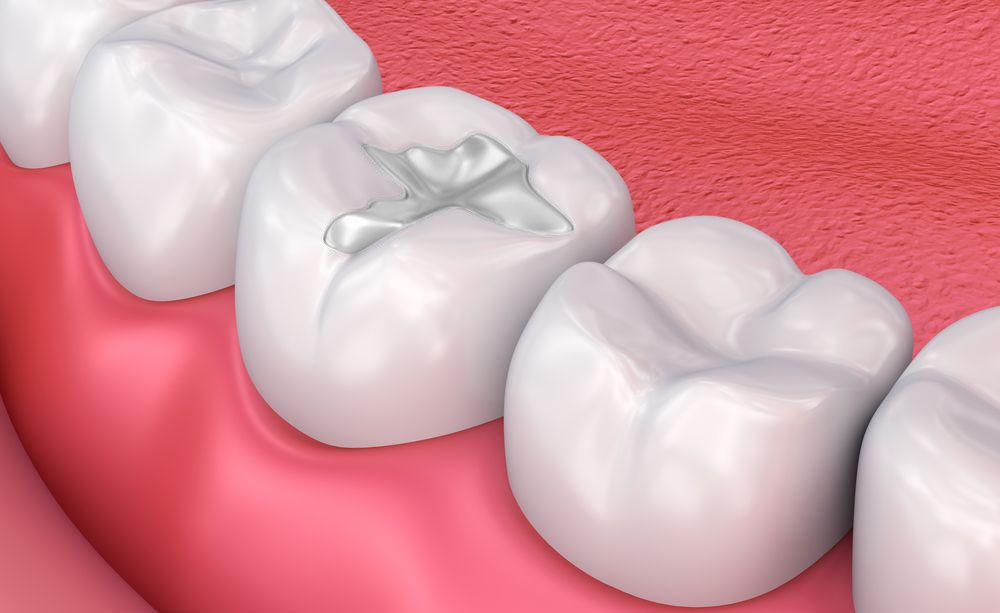
How Doctors Do Dental Filling Procedure?
By offering cavity filling treatment, a dentist can fill the fissure, hole, crack, tear, or gap in your tooth with some special tooth-like material. The therapy can help to eliminate pain and make teeth aesthetically pleasing, and it involves the steps hereunder:
- Applying a Numbing Agent: Applying anesthesia to numb the area the dentist wants to operate on is the first step during dental filling. The anesthetizing process ensures that you do not feel any pain or discomfort. The anesthesia will keep your oral area nerves and mouth for a 4- 6 hours afterward.
- Scraping Off Dirt: After the numbing, the doctor will thoroughly clean and scrape off the decayed tooth portion. The dental surgeon will also sterilize the gum and nerves while preparing to fill the hole.
- Filling of the Dental Hole: Using a filling of composite or amalgam material, your surgeon will fill the damaged, decayed, or cracked part of the tooth. The cavity filling will not only prevent further tooth damage but also act as a barrier to future bacterial infections because of gaps.
- Buff and Refurbishing: Upon filling the identified and clean hole, dentists usually buff and smarten up the surface of the restored tooth until the attainment of the desired teeth shape.
- Testing the Dental Filling: The last element of the dental filling is checking the way the the patient bites the teeth and establishing that the teeth alignment is proper.
Broken Tooth, Root Canal, and Vein Removal Procedures
As a patient having a broken tooth, you need to consult a dental surgeon. Your treatment will depend on the size of the crack or missing part of the tooth. The location of the eroded tooth will count too. When your tooth is badly eroded, the dentist will first perform a procedure known as root canal
before the cavity filling. Root canal refers to the natural cavity at the center of a tooth. The infected pulp and its chamber, which are soft, reside in the root canal. Teeth nerves also lie within the root canal.
During the root canal operation, the dental care expert will remove the pulp and nerve inside the affected tooth as well as clean it before the sealing process can begin. The failure to get rid of the pulp may lead to an infection of the surrounding teeth or the formation of abscesses. An abscess is the term oral health professionals use for the pus-filled pocket that accumulates at the roots of teeth.
Why Does the Dentist Remove Tooth Pulp Before Cavity Filling?
A tooth’s nerve role is to sense hot or cold food and drinks. The taking away of the sensory organ does not affect the daily function of teeth, which is to bite and chew.
With the dentists eliminate the pulp and nerve tissue, the experts are essentially breaking down the area in which bacteria multiply. Once the pulp chamber gets destroyed, the patient can rest assured that there will no more decayed debris or bacteria to cause an oral health disease or abscessed teeth.
Different Kinds of Dental Fillings
The materials used to fill parts of chipped off teeth range from direct composite bonding to special glass ionomer, gold inlays, porcelain, or silver amalgam. The choice depends on the
cavity location, aesthetic preferences, the medical history of the patient, your insurance cover, and financial ability. Below is an explanation of the various teeth filling options:
Amalgam Fillings: Several dental professionals use amalgam, or a composite of silver, mercury, and other metallic substances. Since amalgam fillings are quite strong, they are excellent choices
to treat cavities in molars or back of the mouth, where so much chewing occurs. Composite Fillings: Also called filled resins, composite fillings are a mixture of quartz filler and glass. Quite often, composite fillings will match your natural teeth. As fairly durable materials, composite fillings can fit small-to-mid-size gaps or the teeth that perform little chewing.
Metallic Fillings: Silver and gold amalgam are quite popular to the patients who value fashionable teeth. Although gold amalgam and silver fillings are expensive, they can fit the people looking for metal fillings that last for 10-15 years.
Ceramic Cavity Fillings: Typically made of porcelain, ceramic cavity filling come in several colors. So, if you prefer displaying stain-free teeth, ceramic filing will suit you more than composite cavity filling. However, bear in mind the fact that ceramic is almost as expensive as a gold cavity filling.
Glass Ionomer: Glass ionomer is a mixture of glass and acrylic and can create a cavity to protect teeth by producing fluoride. The only disadvantage of glass ionomer is that compared to another cavity filling, it is less durable and you many require to replace it after five years.
Frequently Asked Questions about Dental Filling Procedures
You possibly only hear about dental fillings and may wonder why the operations are necessary. Hereunder are the answers to FAQ relating to a dental filling.
How Does Your Dentist Fill Your Cavity?
Dentists choose cavity feelings depending on the type of restoration the patient requires. In case you need gold fillings, you may require pre-ordering the material. When you want plastic resin, your dentist will ensure that the material matches the present color of your teeth. The ingredients to replace the hole in a tooth are mixed and placed right onto the hollow space.
Over time, the substance placed in the cavity will dry up and become a hard structure. If your dental surgeon uses plastic resins, it may chip off gradually unless the patient avoids biting hard objects in the few days following the cavity filling procedure.
How Do Different Types of Cavity Fillings Behave?
Plastic resins can also easily show tobacco, coffee, or tea stains. However, plastic can last for several years if the dentist performs three to ten sessions of fillings.
Porcelain fillings, also known as onlays or inlays, are customizable to resemble the color of your teeth. Porcelain fillings are of a higher quality than plastic resins because they can easily resist staining. The only disadvantage of porcelain fillings is that they are sometimes as quite costly and almost as expensive as gold fillings
Silver fillings are fairly affordable. Silver can also resist staining. However, silver usually develops a dark color, so it is not the appropriate material to fill the front teeth.
How Does the Dentist Choose Cavity Filling?
Cavity filling materials range from silver amalgam to cement-like substances, such as glass ionomer. Nowadays, the most preferred option of composite material to fill cavities is a soft plastic that hardens quite fast when chemically bonding with your teeth after the doctor cures the affected tooth with a UV light.
How Much Will It Cost You to Have Cavity Filling Treatment?
- The cost of fillings varies depending on the factors below:
- The material the dental surgeon uses to fill a gap in your tooth.
- The size of the gap requiring a filling.
- Amount of the residual tooth structure
What Happens After a Filling?
When a dentist performs a filling procedure, the professional will ensure that the material used is permanent. The patient will start using the composite to eat food comfortably without precautions.
In fact, your tooth will be as good as new. No person can tell that the tooth has the filling. Ordinarily, the patient may experience mild symptoms, such as moderate sensitivity for up to 48 hours after the cavity filling procedure. Luckily, the treated tooth will stop feeling the sensitivity after 1-2 days.
How Do You Maintain Your Filled Cavity?
The aftercare of the previously sick teeth includes the application of sealants regularly to prevent fissures. Also, you need to brush your teeth after every meal to avoid food remains from lodging in your mouth.
The use of fluoride-based toothpaste may help to attract calcium and ensure that your teeth do not break down because of bacterial acid formation. Once the doctor fills up gaps in teeth, the usual home care actions that include brushing, use of mouthwashes, and flossing are enough.
What Follow-Up do you need after Dental Filling Operation?
After the completion of a dental filling procedure, it will help a great deal for you to consult a dentist in the following weeks to discuss how to prevent decay in the areas near or underneath the filling. The dentist will offer advice on good oral care methods to ensure that no decay occurs in other decay in other teeth. The oral care procedures include using an interdental cleaner daily especially if you are prone to a high risk of further teeth decay.
Patients who dentists categorize as a high risk in regard to the development of cavities can benefit a lot from the application of a sealant over the molars, or the teeth at the back of your mouth to stop plaque build-up or decay in the teeth that you normally use to chew food. Follow- up visits to dental clinic appointments crucial so that the oral healthcare professional can check the progress of the filled up tooth.
Consult Dr. Mogharei for Advice on Dental Filling
Do you need high-quality dentures and the best advice about dental fillings from an experienced dentist? Dr. Mogharei is the best when it comes to dental filling procedures. If you notice
symptoms of tear and wear on your tooth, cracks, or gaps, talk to Dr. Mogharei a renowned dentist, for professional dental filling as soon as possible.
Do not continue chewing food with damaged teeth. Allow Dr. Mogharei to repair the crack in your tooth at an affordable price. A cavity filling a Dr. Mogharei’s clinic will help to avoid throbbing pain, irritation, inability to eat food comfortably, and prevent further teeth infection.






Book an Appointment with Our Team Today!
Enhance Your Dental Health
Our Services
We offer the full scope of family, cosmetic, general dentistry and reconstructive procedures.
What People Say

(310) 829-2224
Discover Expert Dental Care Tips in Our Blogs
Santa Monica Tooth Doctor – Dr. Mogharei Blog



